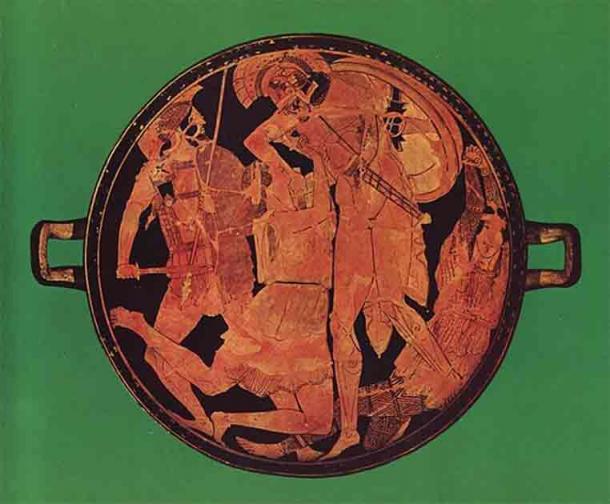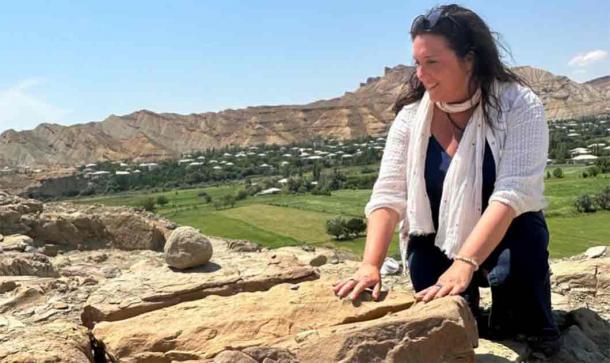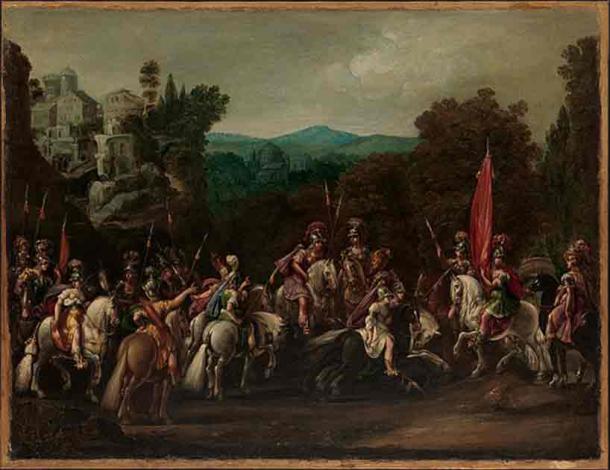Burials in Azerbaijan Point to the Existence of Mythical Amazonian Women!
The legendary Amazons of ancient Greece emerged in classical literature around 3,000 years ago, notably mentioned in the 8th century BC in the Iliad. Despite their early literary presence, the dearth of concrete archaeological evidence has left historians confounded. Recent excavations within a Bronze Age burial ground located in Nakhchivan, Azerbaijan, have uncovered graves containing female remains accompanied by weaponry such as razor-sharp arrowheads, a bronze dagger, and a mace, suggesting the presence of the mythical Amazonian women who lived approximately 4,000 years ago!
Historian Bettany Hughes told The Observer:
“It shows that there’s truth behind the myths and legends of ancient Greece… A civilisation isn’t made up of a single grave. If we’re talking about a culture that crosses the Caucasus and the Steppe, which is what all the ancients said, obviously you need other remains.”
- Who was the Powerful Amazon Queen Orithyia and What Drove Her to Launch a Fated Attack on Athens?
- Female Warriors of the Amazon: A Literary Approach
Fierce and Independent Women: A Blueprint for Today?
Celebrated for their society devoid of men and their battlefield proficiency, particularly in archery, these formidable, nomadic women, skilled in horsemanship and archery, were depicted as fierce hunters and warriors, comparable to men in such prowess. Scenes from their battles were a popular part of Greek art and mythology.
According to Greek mythology, the Amazons were renowned as fearsome and formidable female warriors dwelling on the fringes of the known world. In the legendary tales, Hercules undertook one of his famous 12 labors to acquire the enchanted girdle of Queen Hippolyte, an Amazonian ruler. Achilles, the hero of the Trojan War, encountered another Amazonian queen, Penthesilea, whom he slew in battle only to be struck by her beauty as her helmet was removed.
- Amazon Warrior Woman on Horseback Discovered on 2,500-Year-Old Vase
- The Woman Behind the Man: Celtic Warrior Scathach, Teacher of Warriors

Achilles kills Penthesilea; tondo of an Attic red-figure kylix, 470–460 BC, found at Vulci (Public Domain)
Hughes noted that some of the skeletons indicated extensive use of bows and arrows by the women. She explained that their fingers displayed deformities, likely from prolonged arrow usage, suggesting sustained and intensive practice. According to her observations, these changes in finger joints couldn't have solely resulted from hunting activities.
She further mentioned that the bone evidence revealed clear signs of extended time spent in the saddle, with women's pelvises appearing to have widened due to horseback riding. Clearly, the shape of their bones reflected the impact of their lifestyle.
In addition, the presence of carnelian, a semi-precious stone commonly associated with high priestesses or goddesses, indicates women of high status. The mace heads were also indicative of women with status.

Bettany Hughes at an archaeological site in Azerbaijan for her Treasures of the World series. (SandStone Global Productions Ltd)
Warrior Women in Ancient Societies: Not an Isolated Phenomena
The significance of this evidence is heightened when considered alongside earlier discoveries - in 2019, the remains of four female warriors interred with arrowheads and spears were uncovered in Russia. Earlier, in 2017, Armenian archaeologists revealed the remains of a woman bearing battle injuries, evidenced by an arrowhead lodged in her leg. Going back to the early 1990s, near the Kazakhstan border, the remains of a woman buried with a dagger were unearthed, reports IE.
“They found four women buried with weapons and horse equipment and what’s amazing is that they represent three generations,” said Adrienne Mayor, the author of “The Amazons: Lives And Legends Of Warrior Women Across The Ancient World,” from an interview four years ago. “The oldest woman was about 45 to 50 years old, and then a very young warrior woman, who was between 12 and 13 years old. That’s the astounding part of this discovery because it shows that women of all ages were active warriors and participated in battle alongside the men and were buried with the same honors as the men.”

Departure of the Amazons, by Claude Deruet, 1620, Metropolitan Museum of Art, New York (Public Domain)
These findings collectively strengthen the case for the existence of warrior women in ancient societies. In fact, the consistent presence of women buried with weapons across various regions suggests a widespread phenomenon rather than isolated occurrences, offering compelling evidence supporting the notion that women actively participated in combat and held significant roles in martial activities during ancient times, potentially aligning with the legendary Amazons of Greek mythology.
The discoveries are set to be showcased in an upcoming Channel 4 series scheduled for April, titled "Bettany Hughes’ Treasures of the World." One of the episodes, titled "Silk Roads and the Caucasus," delves into a region characterized by the interplay of diverse cultures and civilizations over centuries - a nexus where trade routes bridged the continents of Asia and Europe, facilitating the exchange of goods, ideas, and influences.
Top image: Painting of a fierce Amazonian woman leading her army into battle. Source: Pana/Adobe Stock
By Sahir Pandey
References
Alberge, D. 2024. ‘Truth behind the myths’: Amazon warrior women of Greek legend may really have existed. Available at: https://www.theguardian.com/science/2024/mar/24/truth-behind-the-myths-amazon-warrior-women-of-greek-legend-may-really-have-existed.
Bolevich, M. 2024. Bronze Age graves hint at existence of mythical warrior women of Greece. Available at: https://interestingengineering.com/science/mythical-warrior-women-of-greece.

















